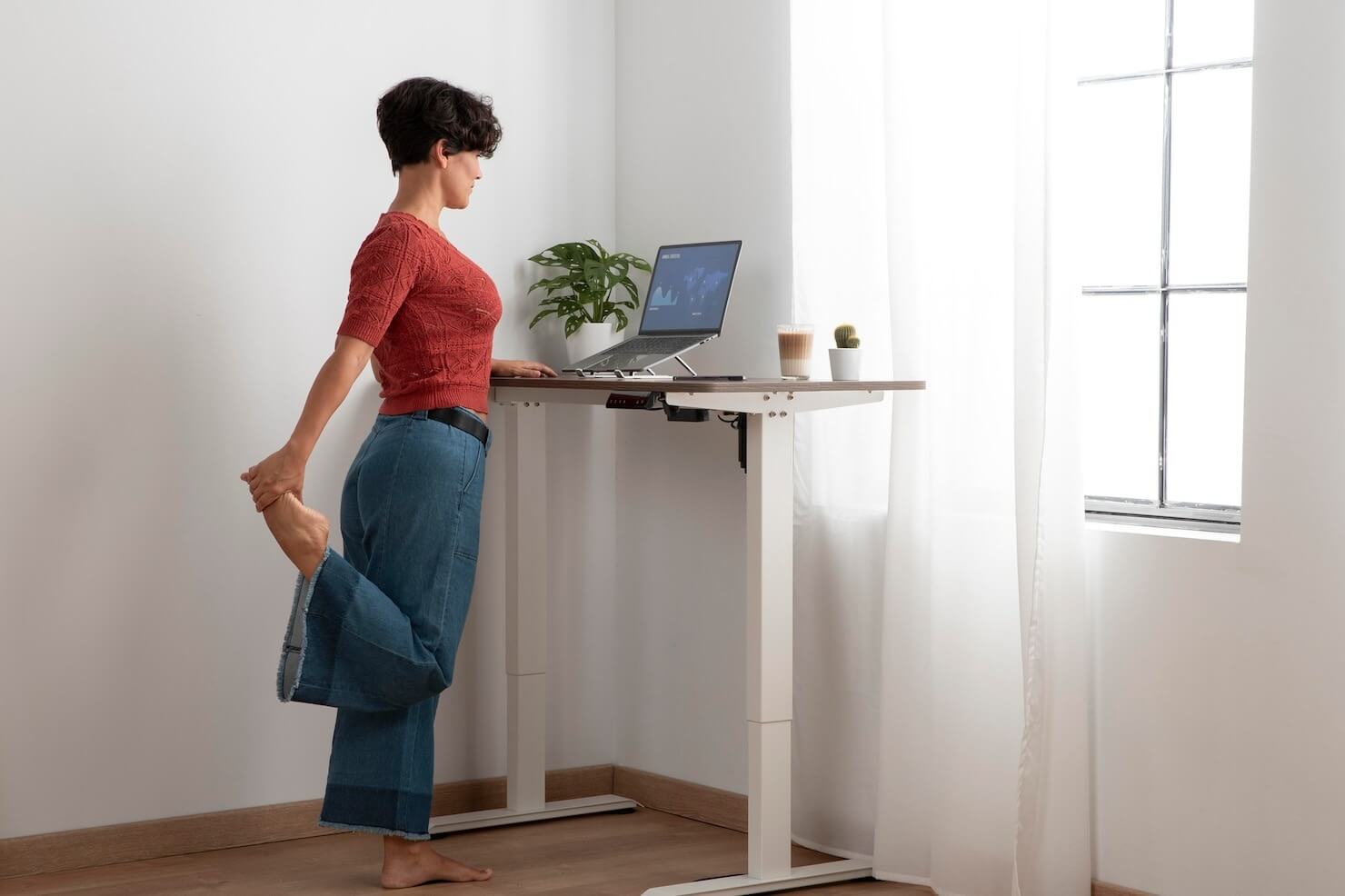In today’s fast-paced world, finding time to stay active can be challenging. Between work commitments, family responsibilities, and social activities, it’s easy to push exercise to the bottom of the priority list. However, staying active is crucial for maintaining your physical and mental health. The good news is that with a few simple strategies, you can integrate physical activity into even the busiest of schedules.
Staying active doesn’t have to mean spending hours at the gym every day. You can make time for movement in small, manageable chunks throughout your day. In this article, we’ll discuss how to stay active when you have a busy schedule by prioritizing exercise, setting realistic goals, and incorporating movement into your daily routine.
1. Prioritize Physical Activity

One of the most important things you can do to stay active is to make exercise a priority. If you wait for the “perfect” time to work out, chances are it won’t happen. Instead, you need to schedule exercise just like you would any other important activity. Here are a few tips:
- Set a Routine: Try to work out at the same time every day to build a habit. Whether it’s a morning run or a lunchtime yoga session, having a set time makes it easier to stick with it.
- Put it in Your Calendar: Block off time in your calendar for exercise. Treat it as a non-negotiable appointment with yourself.
- Combine with Other Tasks: Find ways to combine physical activity with other parts of your routine, such as walking while taking phone calls or stretching while watching TV.
2. Opt for Short, High-Intensity Workouts

If you don’t have time for long workouts, opt for short, high-intensity routines that can still deliver significant benefits. High-Intensity Interval Training (HIIT) workouts, for example, can be as short as 15-30 minutes but are incredibly effective at boosting cardiovascular health, burning fat, and building muscle.
- HIIT Workouts: These involve short bursts of intense exercise followed by brief rest periods. You can do them with bodyweight exercises like squats, lunges, push-ups, or sprint intervals.
- Tabata Training: A specific form of HIIT, Tabata workouts last just four minutes, but they push you to your limits. It consists of eight rounds of 20 seconds of intense activity followed by 10 seconds of rest.
- Use Fitness Apps: There are plenty of apps available that offer quick workout routines that you can do at home or on the go. Many of these apps require no equipment, making them easy to fit into a busy day.
3. Take Advantage of Your Commute
Your daily commute presents a great opportunity to sneak in some physical activity. If possible, walk or bike to work instead of driving. If you take public transportation, get off a stop or two early and walk the rest of the way.
If you drive to work and can’t avoid a long commute, consider parking farther away from your office entrance and walking the extra distance. Taking the stairs instead of the elevator is another simple way to add more movement into your day.
4. Incorporate Movement into Your Workday

Many people spend long hours sitting at a desk, which can contribute to weight gain, back pain, and other health issues. Fortunately, there are ways to stay active even if you have a sedentary job:
- Standing Desks: If possible, use a standing desk for part of your workday. This reduces the amount of time you spend sitting and encourages more movement.
- Walking Meetings: If you have a meeting with a colleague or client, suggest going for a walk instead of sitting in a conference room.
- Stretch Breaks: Set an alarm to remind yourself to stand up and stretch every hour. Even a few minutes of stretching can help improve circulation and prevent stiffness.
- Desk Exercises: Perform simple exercises at your desk, such as seated leg lifts, calf raises, or chair squats, to keep your body moving throughout the day.
5. Use Technology to Your Advantage
Technology can be a great motivator for staying active. Fitness trackers, for instance, can help you monitor your daily activity levels, set goals, and track your progress. Many fitness apps also offer personalized workout plans, challenges, and reminders to help you stay on track.
- Step Counters: Aim for a daily step goal, such as 10,000 steps per day, and use a pedometer or smartwatch to track your progress.
- Workout Reminders: Set reminders on your phone or use fitness apps to prompt you to take a break and move around.
- Online Classes: If you struggle to find time to go to the gym, consider joining online workout classes. There are plenty of options for every fitness level, including yoga, Pilates, strength training, and cardio.
6. Make It a Social Activity

Working out with a friend or family member can make exercise more enjoyable and help you stay accountable. You can schedule regular workout sessions with a workout buddy or join a group fitness class to combine social time with physical activity.
- Fitness Challenges: Create a fitness challenge with friends, such as completing a certain number of steps each day or working out a certain number of times per week. Friendly competition can be a great motivator.
- Family Walks: Involve your family in your exercise routine by going for walks or bike rides together. It’s a great way to spend quality time while staying active.
7. Focus on Consistency, Not Perfection
It’s easy to get discouraged if you miss a workout or don’t have time for a long exercise session. Instead of striving for perfection, focus on consistency. Even short, daily movement adds up over time and can lead to significant improvements in your health.
Remember, something is always better than nothing. On busy days, a 10-minute walk or a few sets of squats can still make a difference. The key is to keep moving whenever and however you can.
8. Make Use of “Hidden” Opportunities for Activity
Sometimes, it’s all about making the most of small moments throughout the day. You can stay active by taking advantage of “hidden” opportunities, such as:
- Walking While Waiting: Whether you’re waiting for an appointment or watching your child’s sports practice, use that time to take a walk or do a few stretches.
- Household Chores: Cleaning the house, mowing the lawn, or doing laundry are all forms of physical activity that can keep you moving.
- Use Commercial Breaks: If you watch TV in the evenings, use commercial breaks to stand up and do some simple exercises like jumping jacks or push-ups.
Frequently Asked Questions (FAQs)
Q1: What is the best time of day to exercise if I have a busy schedule?
The best time to exercise is whenever you can fit it into your schedule. Some people find it easier to work out in the morning before the day gets busy, while others prefer evening workouts after work. The key is to find a time that works best for you and stick to it.
Q2: Can I break up my workout into smaller sessions throughout the day?
Absolutely! You don’t need to exercise for an hour straight to get the benefits. You can break up your workout into smaller sessions, such as doing 10 minutes of activity three times a day. These “exercise snacks” can still provide significant health benefits.
Q3: How can I stay motivated to exercise with a busy schedule?
Staying motivated can be challenging, but setting realistic goals, using fitness apps, and working out with a friend can help. Tracking your progress with a fitness tracker or journal can also keep you motivated as you see your improvements over time.
Q4: Can walking be considered exercise?
Yes, walking is a great form of exercise, especially if you do it at a brisk pace. It’s easy to incorporate into your day, requires no special equipment, and offers numerous health benefits, including improved cardiovascular health and reduced stress.
Q5: What are some quick exercises I can do if I only have 10 minutes?
If you only have 10 minutes, focus on exercises that target multiple muscle groups. Some great options include bodyweight squats, lunges, push-ups, and planks. You can also do a quick HIIT routine with exercises like jumping jacks, burpees, and mountain climbers.




